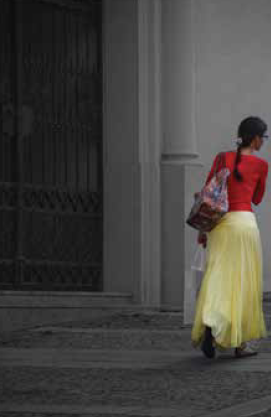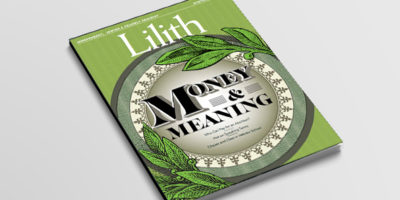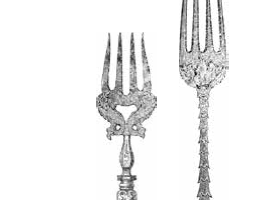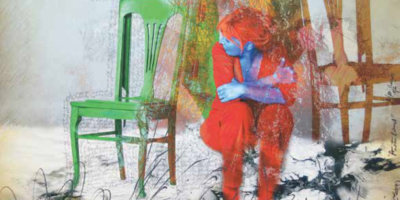
Synagogue Anxiety
I have noticed that the word “itchy” comes up a lot when I talk about my synagogue anxiety. I think it goes back to the excitement of buying a new “temple” outfit every year. I’m a 1980s kid, and in my mind I’m still sitting in a pew, dressed up in a brandnew Benetton sweater dress, purchased for a crisp fall morning that was still many, many weeks away.
There I am, packed into a pew with my similarly bored family, shvitzing like crazy, gawking at the garish makeup on the women around me, and counting the minutes until we would all be out of our misery.
I’m an adult now, so no one can make me wear a sweater before the first morning frost. There’s no reason I can’t go as far away as possible for the yomtoyvim. In 2016, for instance, I spent Kol Nidre in a London pub with one set of lefty Jewish friends and “broke the fast” at a North London Chinese buffet with a couple of the Jewdas folks (no, Jeremy Corbyn wasn’t there). In between these celebrations, I communed with the mummies at the British Museum and reveled in my extreme lack of angst. But did I really have to travel of thousands of miles away from friends and loved ones to escape my problem with Jewish worship?
In 2018 my feelings around Yom Kippur got notably angrier. I may have raised a few eyebrows when I tweeted before Kol Nidre that I would not be humbling myself before a god who would allow a childabusing monster into the most powerful office in the world. Hashem? F that dude, I tweeted, with my usual subtlety. I didn’t bother to move my therapy appointment so it wouldn’t overlap with pretending to care about synagogue. As I walked down the street in clothes far from itchy, I felt defiant: let the entire Upper West Side know I wouldn’t be groveling before any judge, Heavenly, District Court or Supreme.
And yet, I still missed something. Starting in the late 1880s, radical Jews started organizing Yom Kippur balls, epic parties meant to demonstrate the participants’ emancipation from what they saw as old fashioned and stultifying tradition. As Eddy Portnoy notes, what was essential to those balls was first, that they were communal affairs and second, those participating had something to rebel against.
So where does that leave the solo abstainer a hundred years later?
ROKHL KAFFRISSEN, “Caught Between Skepticism and Yearning on the Holidays,” The Lilith Blog, October 10, 2018.




